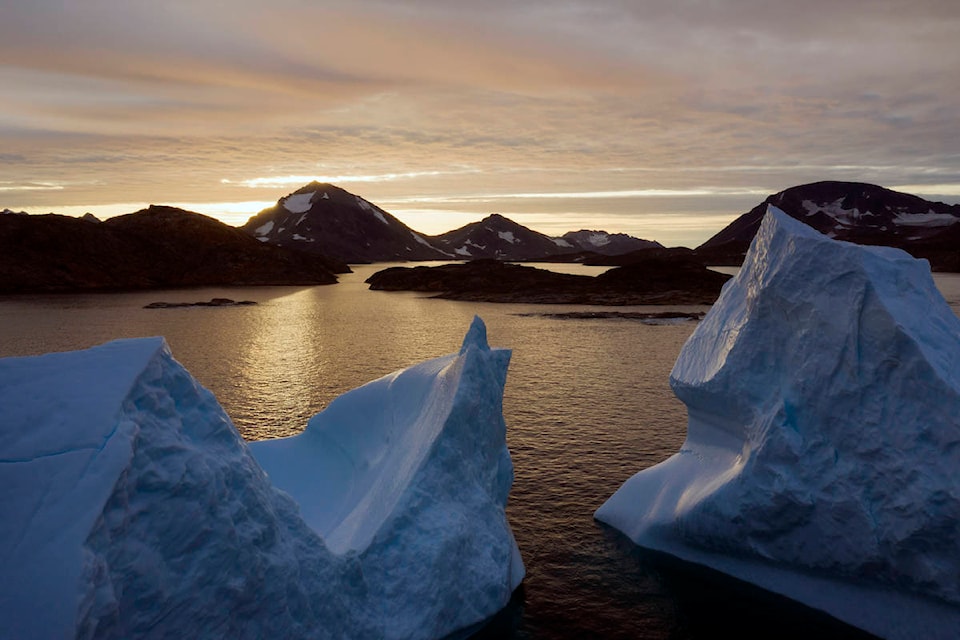Editor:
Tom Fletcher – in a condescending attempt at being the adult in the room – has contributed to the spread of misinformation on climate change. Greta Thunberg, while presenting in front of the US Congress, also said that “I want you to listen to the scientists.” Tom Fletcher would do well to take Greta’s advice.
I’m grateful to Tom for providing a piece that makes for a perfect assignment in my college classroom on how to find reputable sources and determine fact from fiction.
READ MORE: B.C. VIEWS: School officials join fact-challenged ‘climate strike’
READ MORE: COCULLO: The climate strike is far from fact-challenged
Here are Tom Fletcher’s “Facts”, with some additional context:
1. Tom Fletcher introduces a false dichotomy in insisting that wildfires are “the inevitable result of 60 years of wildfire suppression to preserve timber,” when it is both fire suppression and warming that play a role. Here is a source that concluded “human-induced climate change has had a detectable influence on the area burned by forest fire in Canada over recent decades.”
Another, more recent study: “Changes in global fire activity are influenced by a multitude of factors including land-cover change, policies, and climatic conditions.” This study finds “substantial increases in fire potential in regions where vegetation abundance and ignitions are not limiting.”
2. He then puts in a not-so-subtle dig against modeling: “There is science to show it, and it’s not from computer models that have never been accurate once in 20 years.” This statement is ridiculous. Here is one example that finds “conclusive evidence that CO2 can predict GT [global temperature anomaly].”
Many popular websites have recently published comparisons of past modeling efforts with what has actually occurred. One such site concludes that “Climate models published since 1973 have generally been quite skillful in projecting future warming.” This site also provides a link to other studies that compare models and observations.
3. Tom Fletcher writes that “globally, forest area is growing”. This is indeed true! Tom, however, says that this reforestation is due “largely to agricultural technology”. The peer-reviewed study finds that the abandonment of large farms is an “other” area of new tree growth. A primary conclusion of the paper is that “Consistently across all climate domains, montane systems have gained tree cover and many arid and semi-arid ecosystems have lost vegetation cover.” This is a signature of shifting climates: tree lines moving higher with warming, and arid environments getting drier.
READ AND WATCH MORE: “How dare you?” Greta Thunberg addresses UN climate summit
4. Another “fact that climate strikers should hear” that Tom writes is that “Arctic sea ice is melting faster than models predicted, but Antarctic ice is increasing, contrary to forecasts.” Tom continues his dig against modeling studies and sets up another false dichotomy.
First, yes, Arctic sea ice decreased faster than early models predicted, largely because of difficulty modeling how wind would interact with the oceans and ice. Recent studies confirm the prediction of an Arctic free of sea ice by the 2030s. The false dichotomy: The Arctic and Antarctic are different in terms of sea ice.
The same source discusses how wind patterns are at play, with strong winds blowing off of Antarctica driving sea ice away and making room for more sea ice to form, and also that “climate models … predicted this behavior.” This trend in increasing Antarctic sea ice has recently changed and “Antarctic sea ice extent is currently below the long-term average of all decades prior since 1979.”
READ MORE: LETTER: B.C. Views column downplays urgency of climate change
5. Tom’s opinion piece continues with “Drought-affected area is decreasing globally, according to a 2014 study in the journal Nature.” New work finds that “human activities were probably affecting the worldwide risk of droughts as early as the beginning of the twentieth century.” The second author of this study in an interview states that “Climate change is not just a future problem. This shows it’s already affecting global patterns of drought, hydroclimate, trends, variability – it’s happening now.”
6. His final “fact” for climate strikers is that “sea levels are rising, as they have for thousands of years, but the rate isn’t accelerating.” Yes, sea levels have risen for thousands of years. As we transitioned out of the last glacial maximum 20,000 years ago global sea level went up more than 100 meters. This long-term trend, and Tom’s statement of “as they have for thousands of years”, hides other trends, other trends that are well documented in the scientific literature. Another source finding stable or falling sea level during the Little Ice Age.
Now, for a final falsehood to cap off Tom Fletcher’s “facts” for climate strikers … The claim that the rate isn’t accelerating is false.
A 2018 study finds that climate-change-driven accelerated sea-level rise is detected by satellite altimeters. The US’s Climate.govstates that “sea level has been rising over the past century, and the rate has increased in recent decades” and that “the pace of global sea-level rise nearly doubled from 1.7mm/yr throughout most of the twentieth century to 3.1mm/year since 1993.”
Matthew J. Beedle,
PhD Professor of Geography
Coast Mountain College
The Northern View
Send The Newsroom email
Like the The Northern View on Facebook
Follow us on Twitter
